"It is impossible to dissociate language from science or science from language, because every natural science always involves three things: the sequence of phenomena on which the science is based; the abstract concepts which call these phenomena to mind; and the words in which the concepts are expressed. To call forth a concept a word is needed; to portray a phenomenon, a concept is needed. All three mirror one and the same reality."Antoine Laurent Lavoisier, Traité Elémentaire de Chimie, 1789
All things are connected. In any specific system those connections may be sparse or plentiful, irrelevant or crucial. We propose that a continuum of connectivity exists, which allows us to treat all conventional specialisms as just special cases of a more general and universal model. This multi-level model, comprising standard operations, can apply to all aspects of our universe, taking into account not only science, but arts, humanities and spirit also - in other words, "Life, the Universe and Everything". We demonstrate how this is possible, and also show how such an approach, within an evolutionary context, can overcome the problems with relativistic truth and value in conventional thought. Intrigued ? Then read on...
After some 2000 years of recent human culture, our ways of classifying the
world have fallen in some well worn grooves. If we are asked to divide
up human knowledge into fields, then most people would agree that
Science should be included (material aspects), along with Religion (spiritual
aspects), plus something to cover Society (mind aspects). These three can
in turn be broken down into more detail, and then lower still until
we cover all the various specialisms and sects of life.
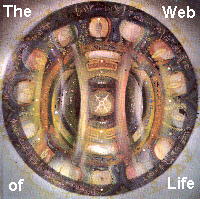 How we do this is perhaps arbitrary, here we will simply use 3 abstract sub-categories
each, but the points made apply regardless of the actual divisions chosen.
Knowledge of one field is assumed inapplicable to other areas (e.g. we
don't ask a plumber to paint a picture, nor a minister to plot the
path of a spacecraft).
How we do this is perhaps arbitrary, here we will simply use 3 abstract sub-categories
each, but the points made apply regardless of the actual divisions chosen.
Knowledge of one field is assumed inapplicable to other areas (e.g. we
don't ask a plumber to paint a picture, nor a minister to plot the
path of a spacecraft).
But here we challenge that assumption, and to do so we need to create a common ground between the various disciplines. This we call the connectionist paradigm - what is important is the connections between things, not the material of which they are made. Our Concept thus relates to interactivity, the ways in which one thing affects another and vice-versa.
We will identify three great paradigms (viewpoints) in Science, three separate facets to Humanity and a further three outlooks in views of the Spirit. If we can somehow relate all these disparate approaches together then perhaps we can generate a new concept of Life, the Universe and Everything, which integrates all the alternatives into one system of complementary strands. Let us first then examine our main sub-divisions in turn, starting with the Sciences.
The earliest form of science dates largely from Sir Issac Newton,
and relates to mechanical systems. Everything is viewed as being
particles in motion and each can be followed through time as an
individual path (or trajectory) - which will be quite isolated unless it
bumps into another particle. We can describe
their behaviour by fixed equations.
This viewpoint concentrates on small numbers of objects at a time,
each described by a simple formula, which is then soluble
to obtain the 'answer'.
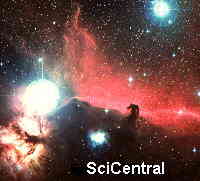 This is the basis for the physical sciences, and increasingly the life sciences.
Extensions to this 'deterministic' idea have led to most of the machines and ideas
of the 'Industrial Revolution' (the pre-electronic age),
and it is still widely used and successful today.
This is the basis for the physical sciences, and increasingly the life sciences.
Extensions to this 'deterministic' idea have led to most of the machines and ideas
of the 'Industrial Revolution' (the pre-electronic age),
and it is still widely used and successful today.
Early in the 20th Century a new view became prominent, this was based upon the study of large numbers of particles, following the discovery of atoms. In this viewpoint individuals cannot be followed, they vary too fast and unpredictably to be calculated (i.e. are chaotic), so a statistical approach using averages, distributions and global properties is employed. This viewpoint was formalised mathematically, and also incorporated into Quantum theory - where no definite answers can be given, only the likelihood (probability) of alternative results occurring can be derived. These techniques are widely used in the life and social sciences, anywhere where large numbers of individuals or parts contribute to the result. Despite the apparent vagueness this 'statistical' idea has been so successful that it has produced most of the 20th Century 'Technological Revolution' advances in electronics, computing and microbiology (based upon Quantum Mechanics).
Our new science of 'Complexity' is the third paradigm. Here we look at
the intermediate states of systems, those with too many parts
to be treated in isolation, yet too few to be studied statistically.
This is a modern systemic approach to science, mostly outside the concerns of
conventional specialisms. This does not mean however that the subject
matter is necessarily different, simply that the methodology we adopt
allows progress to be made across areas that prove unrewarding to
traditional techniques. The central themes here are:
The concepts and ideas of this viewpoint are explored in detail on this web site, so we will not repeat them here. Suffice it to say that the most interesting aspects of our world comprise systems in this (dynamic) middle state, which includes cells, brains and our social interactions.
In other words, you and I.
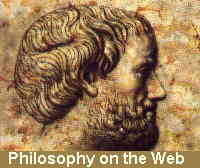
The most fascinating creature on the planet is of course Homo Sapiens, the thinking man. Being self-centered we naturally assume that the destiny and being of our species is paramount, but since ancient Greek times have classified the 'higher' faculties of man as the most important. On this view only the 'rational' intellect is included, so most of philosophy over the last two thousand years has restricted itself to purely rational debate, divorced and detached from the supposedly 'sordid and base' aspects of our actual emotions and actions. Despite this vast theoretical effort, little seems to have been achieved. The variety of conflicting viewpoints has resulted in effective stagnation, a division only into opposing philosophical 'camps'. This can, perhaps, largely be put down to the reliance upon Aristotelian Logic, where all issues must be right or wrong, there can be no middle ground (The Law of the Excluded Middle).
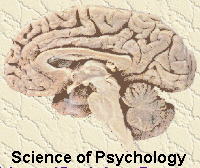
In the early part of the 20th Century, with the rise of psychology, the idea appears that our emotions, instincts, desires are actually important in the way we behave - influencing us subconsciously, even being outside the 'control' of the intellect. This of course comes as no surprise to non-academic people, who experience these things daily - our emotions are at least of equal importance to our behaviour as is our intellect. The explosive growth in the field of psychology and its derivatives has generated many theories of our drives and motivation (sometimes ignoring our feelings completely!), but we still have no consensus as to how our emotional world operates, and many incompatible psychological camps exist. Divisions here tend to result from over-simplification, an insistence that there is such a thing as 'normal' behaviour or a belief that a single theory can explain all aspects of our psychology.

Views of mankind throughout the ages have always stressed our need for social interaction, both with our environment and with each other. This aspect relates to our senses (including here the motor functions - in other words our input and output faculties). Actions affect our world and it in turn affects us, so again we must allow this aspect of our being an equal importance to intellect and emotion. The study of social interactions in economics, politics or sociology has followed rather closely those in the other members of this group, being dominated by disagreement, opposed views and competing action groups. Here we often have a reliance upon Utopian ideas, i.e. that a particular method or goal is 'right' and that we should somehow force society into conformance with it.
The world of the spirit, although important to many, has taken a back seat over recent times. If we investigate spiritual development throughout history however we find that, despite the theological or religious trappings associated with any particular culture, the respected experts in each sect propose essentially the same things. These are proposed irrespective of the form(s) of God(s), and also where no such deities are included.
Truth, or lack of error, is a constant theme. Only by contemplation or meditation is this truth or enlightenment to be discovered. The study subject here is ourself. Looking inwards rather than outwards gives the adept, it is claimed, special knowledge of how the world actually is. Prejudice, ignorance, delusion, materialist cravings and the status of the Self are explored typically, along with 'rules' of morality. The ethical viewpoints of many secular systems also correspond to this aspect of spirit. Here we ask what is the 'good' life and how we tell 'right' from 'wrong'.
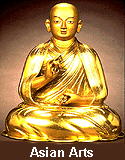
The theme of Beauty is especially important to the artistic spirit. This involves creativity, construction and perfection. It can take both secular and religious forms, and includes music, literature, poetry and drama, as well as the visual arts. In essence we are considering here a form of progress, innovation and exploration. Each artform is expected to be unique, fulfilling the human need for variety and new experience - the development of our personalities. This positive theme can be contrasted with destruction and decay, the negative opposites.
Our theme here is not sex, but the sharing nature of love that is emphasised by many spiritual teachers, not least the Western Christian Jesus and the Eastern Buddha. This view treats all individuals as part of one system, as aspects (in some way) of one reality. It is essentially a connectionist viewpoint, whereby what I do to others affects me also (sometimes in an afterlife). This aspect reflects tolerance to others, forgiveness rather than censorship, a working together, synergy or consensus.
It is important however to distinguish the 'spiritual' from the 'political' or 'material' in religious movements, the practice of a religion regretably often bears very little relationship to its spiritual theory.
Firstly we will concentrate on trying to integrate together the views within each of the identified aspects of our Universe. Later we will look at bringing together those wider divisions.
- A meaningful and consistent explanation that fits in with all our other data and concepts.
- A testable theory that can compete with other theories for accuracy.
- A predictive theory that can generate useful information about the future.
- The simplest theory in agreement with the facts (principle of Ockham's razor).
If we start with one unit (atom, person or whatever) and gradually add extra units we will move from a Deterministic (few units), via a Complexity (many units) to a Statistical (innumerable units) analysis - each being the simplest way of viewing a system of that difficulty. This continuum means that a single scientific viewpoint is now invalid as a method of providing a theoretical structure to our world, if only because it fails our fourth criteria. Whether we can reduce a system to a lower level of description or not is no longer relevant - since by doing so we are only moving from a description of one system with a lot of parts, to a description of one part but now requiring a lot of systems (one system with 1000 variables is equivalent in difficulty to 1000 connected systems each with one variable). The 'reduction' neither adds nor subtracts value, since for a full equivalence a single part model will not do, the reduced system must then model all the separated parts and their interactions at the same time - modelling the parts separately as if they were identical and then adding them just doesn't work for nonlinear systems of autonomous agents !
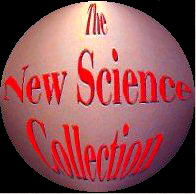 Where the part interactions are simple, and there are no feedback paths, we
can often adopt a simplified approach, a linear approximation that will work for some
systems and over limited timescales. This is what we do with the Deterministic
and Statistical treatments. These work well, but only for a small class of
possible systems. It is the systems outside this narrow range that we are
considering in Complexity studies, in other words the majority. Which technique
we employ needs to depend on which simplifications are possible in the modelling
of the specific property of interest.
Where the part interactions are simple, and there are no feedback paths, we
can often adopt a simplified approach, a linear approximation that will work for some
systems and over limited timescales. This is what we do with the Deterministic
and Statistical treatments. These work well, but only for a small class of
possible systems. It is the systems outside this narrow range that we are
considering in Complexity studies, in other words the majority. Which technique
we employ needs to depend on which simplifications are possible in the modelling
of the specific property of interest.
In this way our science now ceases to be fixed, immutable laws, but becomes a toolbox of several techniques (alternative treatments or viewpoints) that can be freely applied to any system. The one that works the best, according to our four criteria, is the 'optimum' science for that particular system. Squabbles about which form of science is 'true' are a thing of the past, our science returns to where it started - an empirical form of enquiry divorced from its metaphysical underpinnings of absolute 'truth'.
Taking a similar view of human nature, we can see that treatments from the viewpoints of philosophy (logic), psychology (goals) or sociology (collectives) are also related to single (serial), multiple (parallel) and global (holistic) modes of analysis. A thought is pursued in isolation from other themes, a state of mind is a combination of many aspects, and a social system is evaluated on overall, statistical grounds. We can of course change our viewpoint between these approaches freely within our new conceptual system, so are not restricted to single modes of enquiry at any level (e.g. we can stand back and look at our overall philosophical system, or zoom in and see how an individual affects society).
 For many of the questions we would like to answer, it is neither valid to isolate a
property as if it were unaffected by other data, nor to assume that a single or rare
occurrence reflects a general trend. A new approach to this middle ground is offered by
Complexity Theory, where we consider the juxtaposition of several characteristics
and their interactive dynamic effects.
For many of the questions we would like to answer, it is neither valid to isolate a
property as if it were unaffected by other data, nor to assume that a single or rare
occurrence reflects a general trend. A new approach to this middle ground is offered by
Complexity Theory, where we consider the juxtaposition of several characteristics
and their interactive dynamic effects.
By viewing the mind as modular, a collection of interacting specialisms, we can regard many of the aspects discussed in these fields as just alternative levels of detail, within perhaps the most complex system yet discovered. Study of the mind, within the body context, can throw a great deal of light on complex systems thinking, and that in turn can illuminate both the emergent nature of consciousness and that of its embedded sub-conscious processes.
Moving towards the spiritual world we can become aware of essentially the same continuum. The aspect of Truth concentrates on single ideas, Beauty involves a small collection of associated concepts and Love preaches an holistic, system wide, approach. Again we are free to try different viewpoints than those traditional, to illuminate and understand these concepts all the better (e.g. in evaluating how a painting fits into our overall reality, or if a symbol used in it reflects some hidden prejudice).
 Spiritual teachings cover a wide range of ideas, they exist on
multiple levels, from the universal to the particular, with different
sects or groups emphasising different aspects. Although it has been
thought that such ideas are not amenable to constructive thought,
being untestable in the scientific sense, we would contend
nethertheless that the connectionist paradigm can have much to say. In particular
we see parallels between the caring nature of much spirituality
and the positive aspects behind many interactions (what we call positive sum).
Spiritual teachings cover a wide range of ideas, they exist on
multiple levels, from the universal to the particular, with different
sects or groups emphasising different aspects. Although it has been
thought that such ideas are not amenable to constructive thought,
being untestable in the scientific sense, we would contend
nethertheless that the connectionist paradigm can have much to say. In particular
we see parallels between the caring nature of much spirituality
and the positive aspects behind many interactions (what we call positive sum).
Additionally, the much enhanced range of possibilities allowed by complexity thinking does not exclude, per se, many of the more esoteric aspects of religious thought, and these can be discussed within the same paradigm as conventional matters.
From the stance of traditional thought it may seem impossible to
meaningfully merge the very diverse approaches in this title, yet this
is what we will attempt. It is possible to regard our Universe as being divided
into three worlds.
The world of science is that of the 'Objective Physical' world. Here we
assume objects exist and are discrete, real and measurable. The second world, that of thought,
is the 'Subjective Mental' world. Here we generalise concepts, like 'table'. These relate to the
physical world but are less solid and more fuzzy - extracting essences from physical
reality.
 The third world is that of abstract (spiritual) concepts, the 'Mathematical Platonic'
world. Here pure universal forms or ideas are considered (e.g. ethics), without any necessary
relationship to specific or perceived reality.
The third world is that of abstract (spiritual) concepts, the 'Mathematical Platonic'
world. Here pure universal forms or ideas are considered (e.g. ethics), without any necessary
relationship to specific or perceived reality.
We have seen how by viewing each of these areas in connectionist terms we can identify aspects that are related to disconnected units, aspects consisting of a number of connections and those aspects with vast connectivity. Putting them together we get the following associations:
All these concepts suggest answers - definitive and unchanging. In complexity terms all are the pursuit of fixed or cyclic attractors, steady state systems - static reality.
Here we enter a relative realm, where multiple views can prevail. Life is the interplay between these views, a dynamic sequence of alternative states. In our complexity field this corresponds to mixed attractors, co-evolution and change - emergent reality at the edge of chaos.
Global properties come to the fore in this view of the world. We can only make sense by getting a feel for average properties, general trends and directions. The variation due to individuals is a noise on the system which must be filtered out to see the underlying meaning. From a complexity viewpoint we have here the chaotic attractor, whose shape is real but whose components are unpredictable - probabilistic reality.
In most old views of reality we find (at least in the West) a dualist approach (matter/mind, us/them, true/false, ought/is). If we extend our ideas towards the statistical realm then we can see that this duality gradually becomes invalid (in a quantum example a particle doesn't go right or left, but does both to some extent; similarly the views of any two humans aren't disjoint but overlap in many areas). Concepts cannot be divided into absolutes, which are in all circumstances either valid or invalid, regardless of time and space. Yet this does not mean either that at a particular time and in a particular context that a 'correct' value judgement cannot be made, i.e. the relative versus absolute debates in the fields of epistemology, ethics, developmental psychology and religion are just other examples of our ingrained dualist thinking.
If we equate 'correct' with 'fit' then we can employ evolutionary
ideas in all these contexts. When we say therefore that something is
'true' we say both that it is our belief (which may of course vary with
time or education or perspective) and also that, in the context of
our society, that belief gives added fitness - when compared
to alternative beliefs. This two level approach (choice plus
empirical test) allows us to transcend some limitations of
conventional thought, by recognising that both diversity (the
influence of mutation or dissent) and selection (the influence
 of validity checks) are essential to maintain or extend our
current position into the future.
of validity checks) are essential to maintain or extend our
current position into the future.
What this means in practice is that in an unchanging world ideas can be absolute (since the context and thus the value stays constant), but in a changing world (which is the only one we have) they must be constantly re-evaluated if they are to continue to serve the purpose they were intended to justify. History is a good guide to the future, but of necessity does not take into account later developments nor new knowledge. Both should be able to influence the actions suggested by tradition or previous analyses, in appropriate circumstances.
Complexity Theory demonstrates that what is true today may not be true tomorrow, and that what is valid in one society may not be valid in another. Changes to our environment, due either to the actions of others or to our own, can invalidate any fitness measure (criteria of truth) that we employ. If we wish to maintain optimum fitness (which we can relate to our values or to our success against desired criteria), then we need to be willing both to change ourselves and also to take account of changes in the situations around us.
Viewing our values as fitness related, we can see that these operate on multiple levels. In any complex situation our fitness depends not only on our own actions but upon those occuring in our environment. Thus a value-driven behaviour which is advantageous in one situation may fail in another. Values are neither objective nor subjective but contextual, in common with most connectionist concepts, evolutionary strategies which are intended to increase fitness and which can be evaluated accordingly in any particular circumstance.
Evolutionary theory and co-evolution contribute greatly to Complexity
concepts, and these in turn suggest better ways in which to understand
evolving and finely balanced systems. Almost all systems are found to
evolve, although the timescales and mechanisms vary greatly. Change,
by recombinations of parts, seems to be a general concept of life, much
neglected in conventional treatments. In contrast Complexity Theory
includes the dynamics, the processes, as an integral part of the model
and thus can naturally incorporate these difficult concepts.
Having unified all the aspects of our world in one paradigm,
that of connections, where does this leave us ? If we are to study any particular field we must be
able to apply the concept usefully. This involves the synthesis of the
whole from the parts, the opposite of reductionist analysis.
So let us identify the stages in doing this.
Here we can make use of all our existing expertise in the
reductionist methods, classifying the constituents of the
system. This need not however be a scientific procedure as
such, but can be a general one (e.g. to paint a picture one
might consider, at the lowest level, brushes, paint colours, subjects
etc.). The number (n) and types of parts (t) may vary from zero to infinity,
so in theory we can encompass all possible systems.
For simple systems we can assume the parts are fixed
(n conserved), for more complex ones they can be
created and destroyed over time.
Rebuilding the World
Which Parts (Building Blocks) Are Involved ?
How Do They Interconnect ?
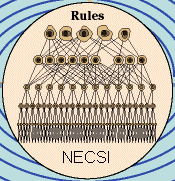
This new stage adds into the system the relationships (k) between the parts. These again may vary from zero (all are isolated) to n times n (a part can be connected to every other part, including itself). This allows for all interaction possibilities. Again for simple systems we can assume a connection is either present or not, for more complex ones connections can vary in strength over time (weighted interactions or functions) or can be probabilistic.
This is what is called a state transition function (t). It takes the current state of a part (s) and specifies for all the possible states of its interconnections (k) what the result will be. For simple systems this result may be just a new part state (or the same one), but for complex systems parts can be created (birth) or destroyed (death), connections strengthened or weakened. The rules, in their most general form, take in both parts and connections and output both parts and connections. We may have the same rule for every part (the equivalent of scientific 'laws') or each may have an individual one. Ultimately the set of inputs, the set of outputs and the set of rules can be equivalent and completely open ended. This allow any required transform of the system to take place, thus taking the form of both a Universal Computer and Universal Constructor - the parts of a system can both respond to the whole environment and they can change it. They can also freely alter the rules (in other words themselves - as minds do whilst learning).
The interactions of parts can lead to new properties becoming evident. These are not describable using the same vocabulary as is applied to the parts, but need new terms, new concepts. For simple systems a statistical property may suffice, e.g. 'pressure' is a higher level concept formed when multiple atoms collide randomly with a barrier. The individual atoms do not possess such a property, only momentum (which for stationary systems sums overall to zero).
![]() More complex interactions give rise to more complex
emergent properties. For example an aircraft possesses
the property of flight, but this depends on a complex
set of interactions taking place in sequence. It is a
fragile property, which can be destroyed by a part
failure (in common with most human machinery).
More complex interactions give rise to more complex
emergent properties. For example an aircraft possesses
the property of flight, but this depends on a complex
set of interactions taking place in sequence. It is a
fragile property, which can be destroyed by a part
failure (in common with most human machinery).
The interactions of organic molecules, by contrast, give rise to life, movement, senses and such abilities (as in an amoeba). These are resilient to certain changes in the composition of the parts (usually the parts are constantly destroyed and replaced). It is evident here that a single system can give rise to multiple different emergent properties, all inter-related yet all distinct from each other.
These emergent properties can themselves be
regarded as parts in a higher level structure, new
modular building blocks that can combine to generate
 new forms of emergence. This multi-level emergence
is typical of the most complex systems. Examples
include the emergence of enzymes from atoms,
cells from protein activity, tissues from cell
interactions, organs from tissue assemblies, higher organisms
from organ co-operation, minds from neuron networks,
societies from message exchange, the United Nations
from cultural agreements and perhaps beyond to transpersonal levels.
There is often a two way interaction
between levels in these systems (e.g. an emergent society
can constrain the individuals which make it up, yet an
individual can also change the shape of society).
new forms of emergence. This multi-level emergence
is typical of the most complex systems. Examples
include the emergence of enzymes from atoms,
cells from protein activity, tissues from cell
interactions, organs from tissue assemblies, higher organisms
from organ co-operation, minds from neuron networks,
societies from message exchange, the United Nations
from cultural agreements and perhaps beyond to transpersonal levels.
There is often a two way interaction
between levels in these systems (e.g. an emergent society
can constrain the individuals which make it up, yet an
individual can also change the shape of society).
Note that all of these levels can be studied using the same paradigm, that of the interfaces between the parts that make it up. This reflects the power of this non-reductionist approach.
The procedure outlined above is very much a generalised and idealised treatment. For most real systems we do not have such detailed knowledge, so how do we deal with these ? There are many methods available, of which we will briefly mention five.
The advent of powerful computers allows us to model systems containing many parts, something not previously possible. We thus can, for the first time, deal with systems too complex for conventional analysis. This involves taking a guess at what connections and rules are involved in the system of interest, and then running a computer simulation with those specifications. If the same properties emerge in the model as we see or desire in real life then we may have a valid model.
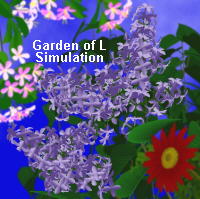 This is exactly the same in principle as creating a mathematical
model in conventional science. In neither case can we be
sure that the model is the same as reality, yet all we ask
is correspondence with the facts. To help confirm the
model we then require to look in detail at the real life
system to see if the interconnections exist in the form
imagined. If not, the new data can be added to the simulation
and alternatives tried.
This is exactly the same in principle as creating a mathematical
model in conventional science. In neither case can we be
sure that the model is the same as reality, yet all we ask
is correspondence with the facts. To help confirm the
model we then require to look in detail at the real life
system to see if the interconnections exist in the form
imagined. If not, the new data can be added to the simulation
and alternatives tried.
The great advantage of this approach is that we do not need mathematical formulae in setting up the model, so it is equally applicable to social and artistic areas where such things are unknown. All that is required is a description of the system in terms of the elements of interest and how they are thought to interact. By iterating the simulation (step by step) and making adjustments we can converge onto the desired behaviour.
As we know so little about the behaviour of complex systems we can use such simulations to explore the possibilities available. This involves running many simulations with randomly selected interconnection regimes, and analysing the results statistically. In this way we get a feel for system behaviour, what type of interconnections produce what emergent features. Much work has been done recently in this area e.g. in the modelling of possible Neural or Genetic interconnection schemes. The results obtained should be generally applicable to any type of equivalently connected system (physical to social) and in fact many applications of these findings have already been suggested.

Complexity Theory incorporates a number of specialist fields, each exploring in depth one or more of the themes that relate to the connectionist view. These fields include Artificial Life, Attractor Theory, Cellular Automata, Chaos Theory, Evolutionary Computation, Fractals, Fuzzy Systems, Genetic Algorithms, L-Systems, Neural Nets, Nonlinearity, Self-Organization plus related subjects.
Applications of these specialisms are many, sometimes trying to solve existing problems in another related field, sometimes creating a completely new viewpoint. This work has invaded the disciplines of Art, Biology, Business Management, Chemistry, Conflict Management, Economics, Education, Games, Genetics, Literature, Medicine, Music, Philosophy, Physics, Psychology, Sociology and Technology to name but a few.
Due to the general nature of the procedures outlined above, we can replace the inputs, the outputs and the rules by symbols. These can be mathematical, linguistic, physical, artistic, religious iconography or whatever form we desire to fit the questions of interest. The operation of our generalised system is equivalent to the manipulation of collections of these symbols. As in language, the rules of grammar are stated in the same alphabet (letters, words, sentences etc.) as the creations that it produces. This circularity allows emergence, new rules (speech forms say) can be generated during the dynamic operation of the system. Analysis of such possibilities, and the consequences of adopting certain initial axioms (restrictions) can gain insights into many complex human symbolic activities and maybe Life itself.
The framework outlined here is very general, but can be restricted in many ways. As we do this we move towards more conventional subject treatments, yet retain the new viewpoint of the complexity sciences. Many such constraints are possible and have the effect of reducing the phase space (options) of the system, making study easier, e.g.
- Connectivity - restrict consideration to standard number of inputs (0, k or n)
- Constituents - restrict the number of part types to one or a few.
- Size - consider only very small or very large systems.
- Timescale - consider only very short or very long timescales.
- Properties - restrict attention to only one emergent property.
- Level - restrict attention to only one level.
- Isolate - fix as constants all but one variable.
- Simplify - assume linear rather than nonlinear interactions, discarding higher order terms.
- Generalise - Model an average property value rather than the true spread that exists.
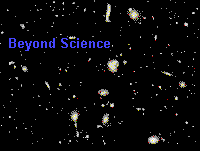
Each of these limitations is only valid in certain circumstances. As we combine the constraints we severely restrict the applicability of the results, and in the limit this reduces the system to the specialist theories inherent in conventional fields. Existing theories are thus seen as sub-sets of this more general one. To see this visually, we can divide up the state space corresponding to 'Life, the Universe and Everything' into sub-spaces, partitioned into the categories and concepts of conventional thought. In this infinite dimensioned space human knowledge will appear as a randomly distributed set of volumes, but so sparsely occupying the space as to be almost invisible. The empty space represents knowledge yet to be discovered, the potential knowledge explored by Complexity Theory (together with related systems theories).
Our concept thus relates to the interaction of all things (what we called a connectionist viewpoint - what is important is the connections between things, not the material of which they are made), and this is illustrated symbolically in our Logo. On the left is a Boolean Network, one of the great logical ideas behind complexity theory. Here individual units interact with others in simple ways yet resulting in the emergence of new properties, higher levels of meaning. On the right we see the result of genetic mutations over time, affecting the development of a bi-symmetrical artificial artform by using the complementary technique of Genetic Algorithms.
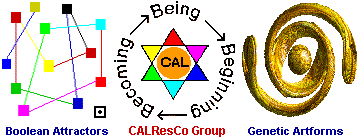 Our middle interacting star contains two triangles with a central disc, explained as follows:
Initially we have a triangle, of primary colours (red, green, blue) representing the three aspects of
human endeavour: Science, Arts (Humanity) and Psyche (Spirit). Opposite to these we have
another triangle, this time in complementary colours (cyan, magenta, yellow) representing the
meaning of the primary aspects (Truth, Beauty and Sharing). The central circle in orange,
representing the sun (or light) signifies the illumination obtained by merging the three aspects into
a balanced holistic whole (the three primary lights add to white, the three secondary pigments
add to black - the resultant duality reflects the Yin/Yang balance of Eastern Taoism,
and the trilogy represents the Trinity of Western Christianity and the Hindu Yogas of Knowledge, Action and Devotion).
Our middle interacting star contains two triangles with a central disc, explained as follows:
Initially we have a triangle, of primary colours (red, green, blue) representing the three aspects of
human endeavour: Science, Arts (Humanity) and Psyche (Spirit). Opposite to these we have
another triangle, this time in complementary colours (cyan, magenta, yellow) representing the
meaning of the primary aspects (Truth, Beauty and Sharing). The central circle in orange,
representing the sun (or light) signifies the illumination obtained by merging the three aspects into
a balanced holistic whole (the three primary lights add to white, the three secondary pigments
add to black - the resultant duality reflects the Yin/Yang balance of Eastern Taoism,
and the trilogy represents the Trinity of Western Christianity and the Hindu Yogas of Knowledge, Action and Devotion).
Surrounding the star (representing infinity) we have the essence of complexity: a continuous loop of change, Being, Beginning, Becoming - the cycle of nature: Existence, Choice, Development. In its turn this reflects the Buddhist concept of Manifestation (matter), The Ground Luminosity (potential) and Creation (energy) persisting throughout all existence and beyond. In this symbolism Being is the world of form, the static concepts of Newtonian reality, the attachments we have to things, to beliefs, to material reality. Beginning is the world of possibility, the dynamic concepts of the Quantum Vacuum, the alternative realities that can be imagined, the freedom of the mind to generate abstract values and realities. Becoming is the world of change, the meshing of these two other worlds in a dance of creation and dissolution, the realisation that everything we see and do relates to a reality that evolves. This is the knowledge that objects are only temporary structures and that processes are primary, that what 'is not' becomes what 'is' and what 'is' becomes what 'is not', that the foreground and the background alternate over time.
By showing these concepts in symbolic form we emphasise that not all knowledge is linguistic, other modalities can often better convey complex ideas and multi-level concepts. Our attachment to text is a cultural manifestation of our own social and academic life, and needs to be augmented with these other viewpoints and approaches if we are to effectively explore the diversity that is possible in complex systems and in our own lives.

We have demonstrated the flexibility of our Concept of Complexity Theory in relating to all aspects of human thought and activity. Complexity is very much a relative concept, linked to the scale in space and time with which we view the system under consideration. As we vary our spatial scale (at each level) we zoom in from afar, going from an holistic view, through a complex one and down into a detailed part related model. Likewise, by varying our timescales we can move from a static (snapshot) analysis, via a changing (dynamic process) perception to a chaotic (integrated) model. This ability to cover a whole gamut of viewpoints within the same system, simply by varying our frame of reference, puts into perspective the educational limitations of those conventional approaches which, because of their axioms (assumptions), are forced to use a single context.
Many of our problems in studying social systems relate to the multiple interacting
values inherent in any individual. Complexity Theory is perhaps the first systemic approach
that seems to have adequate power to model such human situations which comprise highly unconstrained self-organizing systems. Most of the research
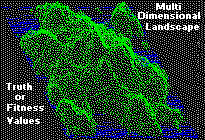 underway in the field so far concentrates on the scientific aspects and there is still very
much to do here, not only within existing complexity ideas, but beyond e.g. in relating fuzzy
logic concepts to complexity themes and in moving agent concepts into the quantum and
probabilistic realms. Yet there is also much scope beyond the restrictions of a scientific
method, in dealing with those fields currently outside that approach. Here we are
concerned less with prediction and more with understanding the options, the ways
in which our multi-faceted views interrelate i.e. the shape of the fitness landscape. It is in these areas that much of the value of the complexity approach is expected to occur, leading ultimately to a theory of 'Life, the Universe and Everything' which has global scope...
underway in the field so far concentrates on the scientific aspects and there is still very
much to do here, not only within existing complexity ideas, but beyond e.g. in relating fuzzy
logic concepts to complexity themes and in moving agent concepts into the quantum and
probabilistic realms. Yet there is also much scope beyond the restrictions of a scientific
method, in dealing with those fields currently outside that approach. Here we are
concerned less with prediction and more with understanding the options, the ways
in which our multi-faceted views interrelate i.e. the shape of the fitness landscape. It is in these areas that much of the value of the complexity approach is expected to occur, leading ultimately to a theory of 'Life, the Universe and Everything' which has global scope...